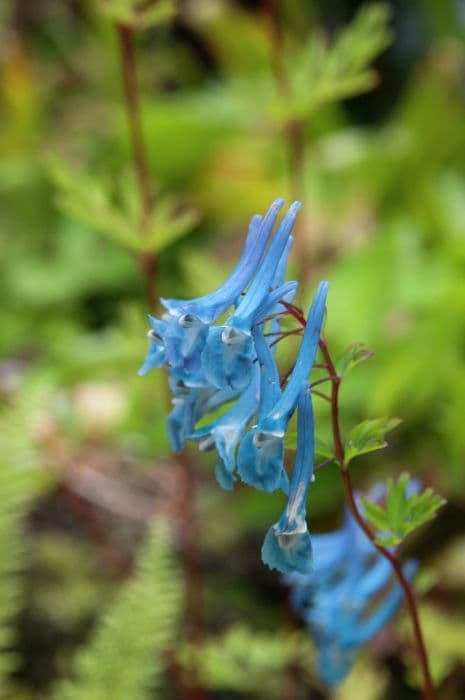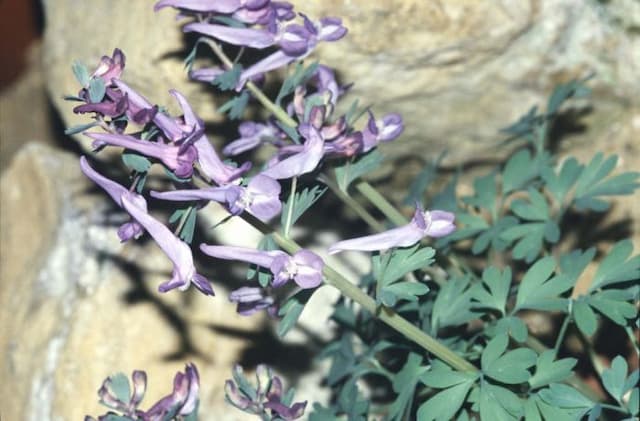California Poppy Eschscholzia californica subsp. mexicana 'Sun Shades'

ABOUT
This plant, commonly known as the California poppy, presents a distinct appearance with its vibrant blooms. The 'Sun Shades' variety boasts flowers that feature an alluring spectrum of colors, with shades ranging from yellow to orange, and sometimes a blend that looks like a fiery sunset. Its petals are silky and overlapped, forming a cup shape when fully open, which reveals a contrasting core often of a darker or richer shade. The foliage of the California poppy is also notable, with a blue-green hue, and is finely divided into thread-like segments, giving it a ferny, delicate texture. This delicate-looking foliage forms a complementary backdrop to the bright, eye-catching blossoms that sit atop slender, erect stalks. The overall look of the California poppy 'Sun Shades' is one that exudes cheerfulness and brings a burst of color to any setting where it grows.
About this plant
 Names
NamesFamily
Papaveraceae.
Synonyms
California Poppy, Golden Poppy, California Sunlight, Cup of Gold.
Common names
Eschscholzia californica var. mexicana, Eschscholzia mexicana
 Toxicity
ToxicityTo humans
The most common common name for Eschscholzia californica subsp. mexicana 'Sun Shades' is California poppy. The California poppy is generally considered to be non-toxic to humans. They have been used historically in traditional medicine, often as a mild sedative or analgesic. However, consuming any plant material can pose some risks if the individual has specific allergies, sensitivities, or if it interacts with certain medications. It's always advisable to consult with a healthcare provider before ingesting any part of a plant for medicinal purposes.
To pets
The common name for Eschscholzia californica subsp. mexicana 'Sun Shades' is California poppy, and it is generally considered to have low toxicity for pets such as dogs and cats. While it is not common for pets to exhibit symptoms of poisoning from consuming this plant, as with any non-food plant, ingestion could potentially cause mild gastrointestinal upset in some animals, like vomiting or diarrhea. If you suspect your pet has ingested a large quantity of the California poppy or if they are showing signs of illness, it is wise to contact a veterinarian.
 Characteristics
CharacteristicsLife cycle
Perennials
Foliage type
Deciduous
Color of leaves
Blue-green
Flower color
Mixed
Height
1 foot [30 cm]
Spread
1 foot [30 cm]
Plant type
Herb
Hardiness zones
8
Native area
Mexico
Benefits
 General Benefits
General Benefits- Low maintenance – This plant is drought-tolerant and requires minimal watering and care once established.
- Aesthetic appeal – With its vibrant and colorful flowers, it adds visual interest and beauty to gardens.
- Attracts pollinators – The blooms attract bees, butterflies, and other beneficial pollinators.
- Easy to grow – It can thrive in a variety of soil types and is easy to establish from seed.
- Suitable for xeriscaping – Its drought resistance makes it an ideal choice for water-efficient landscaping.
- Sun tolerance – This plant loves full sun and is perfect for sunny garden spots.
- Deer resistant – Generally not favored by deer, which can be beneficial in areas with deer pressure.
- Edible parts – Some parts of the plant are edible and can be used in culinary applications (please note that only certain parts are edible, and it's important to correctly identify and prepare these).
 Medical Properties
Medical Properties- Eschscholzia californica subsp. mexicana 'Sun Shades', commonly known as California poppy, may have sedative and anxiolytic properties due to its potential to induce relaxation and alleviate anxiety.
- The plant has been traditionally used to promote sleep, suggesting potential mild sedative effects that could aid those with insomnia.
- California poppy contains alkaloids that might offer analgesic benefits, possibly helping to reduce pain.
- Antispasmodic effects have been associated with the plant, which could be helpful in alleviating muscle tension or spasms.
 Air-purifying Qualities
Air-purifying QualitiesThis plant is not specifically known for air purifying qualities.
 Other Uses
Other Uses- California Poppy dye: The petals of the California Poppy can be used to create a natural dye in shades of yellow or orange, suitable for fabrics and art projects.
- Companion planting: California Poppies are often planted alongside vegetables to attract pollinators and potentially repel certain garden pests.
- Floral arrangements: The vibrant flowers can be used as a fresh component in bouquets or as a delicate dried flower in everlasting arrangements.
- Landscape coloring: The plant can be used in xeriscaping to provide bold color contrasts in low-water gardens.
- Erosion control: California Poppy's root system helps to stabilize soil on slopes and prevent erosion.
- Educational tool: The plant can be used in schools to teach children about plant life cycles, native plants, and pollination.
- Photography: With their vivid colors, California Poppies provide striking subjects for botanical and landscape photographers.
- Soil indicator: The presence of California Poppy can indicate certain soil conditions, such as dry or poor soil quality.
- Artistic inspiration: The distinct shape and color of the California Poppy have inspired artists in various mediums, including painting and sculpture.
- Culinary presentation: Although not a common food source, the petals can be used as an edible garnish to add color to dishes.
Interesting Facts
 Feng Shui
Feng ShuiThe California poppy is not used in Feng Shui practice.
 Zodiac Sign Compitability
Zodiac Sign CompitabilityThe California poppy is not used in astrology practice.
 Plant Symbolism
Plant Symbolism- Beauty and Simplicity: The Eschscholzia californica, commonly known as the California poppy, showcases beauty in its simple and delicate form, which can be a reminder to appreciate the simple things in life.
- Resilience: Being native to California, this plant is well adapted to survive in dry conditions, symbolizing the ability to persevere through challenging times.
- Peace: The poppy has been associated with sleep, rest, and recovery. Its relaxing properties symbolize the need for peacefulness in our lives.
- Remembrance: Although more commonly associated with the red poppy, poppies in general are a symbol of remembrance of those who have died, especially in wars.
 Water
WaterFor the California poppy 'Sun Shades,' water the plant when the soil feels dry to the touch, typically once a week, although this can vary depending on climate conditions and soil type. It's best to water deeply so the water reaches the root zone; use roughly 1 gallon of water per square yard of soil each week during the growing season. Make sure the plant is in well-draining soil to prevent root rot. Decrease watering frequency in the fall and winter months when the plant's growth slows down or it goes dormant, and always check the soil moisture before watering to avoid overwatering.
 Light
LightThe California poppy 'Sun Shades' thrives in full sunlight. It requires a minimum of 6 to 8 hours of direct sun per day. Choose a spot in your garden that receives ample sunlight without any shade for the best growth.
 Temperature
TemperatureThe California poppy 'Sun Shades' prefers warm conditions and is hardy in temperatures ranging between 30°F and 100°F. However, it grows best when daytime temperatures are between 60°F and 85°F. Ensure the plant is protected if temperatures are expected to dip below freezing, as it may not survive hard frosts.
 Pruning
PruningThe California poppy 'Sun Shades' benefits from occasional deadheading to remove spent flowers, which encourages further blooming throughout the season. Prune back the plant after flowering has ended to keep it tidy and to possibly stimulate a second bloom. Annually, cut back the foliage after it dies back in late fall to prepare the plant for its winter dormancy.
 Cleaning
CleaningNot needed
 Soil
SoilThe California Poppy 'Sun Shades' thrives best in well-draining, fertile soil with a preference for a slightly acidic to neutral pH of around 6.0 to 7.0. A mix containing two parts sandy loam, one part compost or well-rotted manure, and a sprinkle of bone meal to boost phosphorus is ideal.
 Repotting
RepottingThe California Poppy 'Sun Shades' typically does not require frequent repotting as it's often grown as an annual. However, if grown in a container, repotting can be done in the spring if the plant has outgrown its current pot or every 2-3 years.
 Humidity & Misting
Humidity & MistingThe California Poppy 'Sun Shades' is tolerant of a wide range of humidity levels and does well in dry environments. It does not have specific humidity requirements, making it adaptable to typical outdoor conditions.
 Suitable locations
Suitable locationsIndoor
Ensure full sun and well-draining soil for indoor California Poppies.
Outdoor
Plant in full sun, well-drained soil; water moderately.
 Life cycle
Life cycleThe California poppy 'Sun Shades', begins its life cycle when the seeds germinate, usually in late winter or early spring, when the soil temperatures are cool and moisture is abundant. The seedlings then develop a rosette of leaves at the soil surface. As temperatures rise, the plant elongates its stems, unfurls delicate, lobed leaves, and begins to bud. The flowering stage follows, showcasing vibrant hues that can range from yellow to orange and red, typically peaking in mid-spring to early summer. After pollination, which often involves local bee species, the plant sets seed in elongated, capsule-like fruits that open to release seeds. The California poppy 'Sun Shades' then enters dormancy over the dry summer months, completing its annual cycle, with seeds lying in wait to begin the process anew with the return of favorable conditions.
 Propogation
PropogationPropogation time
Spring-Early Summer
The most popular method of propagating California poppy, particularly the Mexican subspecies 'Sun Shades', is through seeds. The best time to plant these seeds is in early spring after the danger of frost has passed. To sow California poppy seeds, simply scatter them lightly on prepared soil where you wish the plants to grow, as they do not transplant well and prefer not to be disturbed. Cover the seeds with a thin layer of soil – no more than a quarter-inch (approximately 6 millimeters) deep. Keep the soil moist until germination, which typically occurs within 10 to 15 days. California poppy seeds need light to germinate, so avoid burying them too deeply. Once established, the plants require minimal maintenance and will readily self-seed for future growth.









